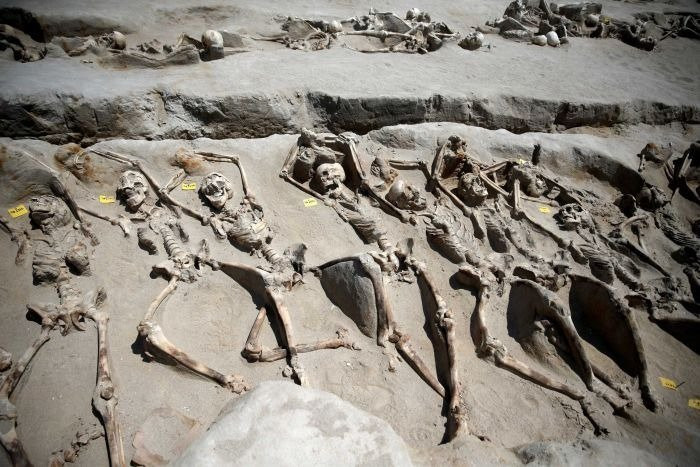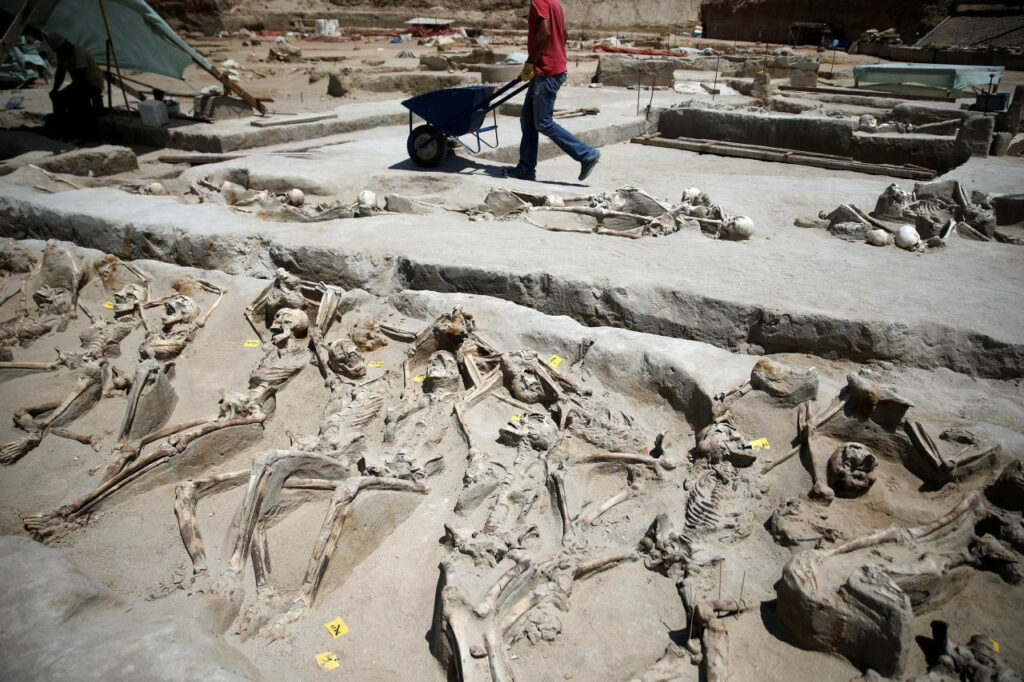The Grim Scene at Faliron Delta
In the bustling metropolis of Athens, where modern construction meets ancient history, archaeologists have stumbled upon a haunting reminder of the city’s tumultuous past. During the construction of a national opera house and library, workers made a startling discovery – buried beneath the sandy soil lay the remains of at least eighty individuals, their wrists bound by iron shackles. This macabre find has captivated researchers and history enthusiasts alike, sparking intense speculation about the identities of these unfortunate souls and the circumstances that led to their demise.

Dr. Stella Chryssoulaki, the lead archaeologist, notes that despite the violent nature of their deaths, the victims were buried with a measure of respect. Most were young and healthy at the time of their execution, their arms bound above their heads. The orderly burial suggests these were not mere slaves or criminals, but perhaps individuals of some importance.
Clues from the Past
The Faliron Delta necropolis holds more than just this mass grave. Over 1,500 bodies have been discovered in the cemetery, including infants in ceramic pots and adults in stone coffins. Unlike the famous Kerameikos cemetery, this site offers a glimpse into the lives of ordinary Athenians from the 8th to 5th century BC.

Theories and Speculations

The Cylon Hypothesis
One prevailing theory links these remains to a failed coup attempt in 632 BC. Cylon, an Athenian noble and Olympic champion, tried to seize power with the backing of his supporters. While Cylon escaped, his followers were not so fortunate. Could these shackled skeletons be the ill-fated supporters of Cylon’s ambitious plot?

A Snapshot of Ancient Athenian Life
The Faliron Delta necropolis provides a unique window into the lives of ancient Athenians. Unlike the elite burials found in the Kerameikos cemetery, this site offers a more comprehensive view of the city’s population, including infants, children, and ordinary citizens.

Looking to the Future
As excavations continue, researchers hope that DNA analysis will shed light on the identities of these mysterious individuals. Dr. Chryssoulaki envisions a museum at the site, preserving this snapshot of ancient Athenian life for future generations.
In the shadow of Athens’ modern skyline, these shackled skeletons serve as a poignant reminder of the city’s complex history. As one archaeologist poetically noted, “A cemetery is a first and last photograph in antiquity of those people that pass from life to death.”
The discovery at the Faliron Delta necropolis has captivated the archaeological community and the public alike. By unraveling the secrets of these shackled skeletons, researchers hope to gain a deeper understanding of the turbulent history that shaped ancient Athens. This chilling find serves as a powerful testament to the enduring legacy of a city that has witnessed both triumph and tragedy throughout the centuries.

